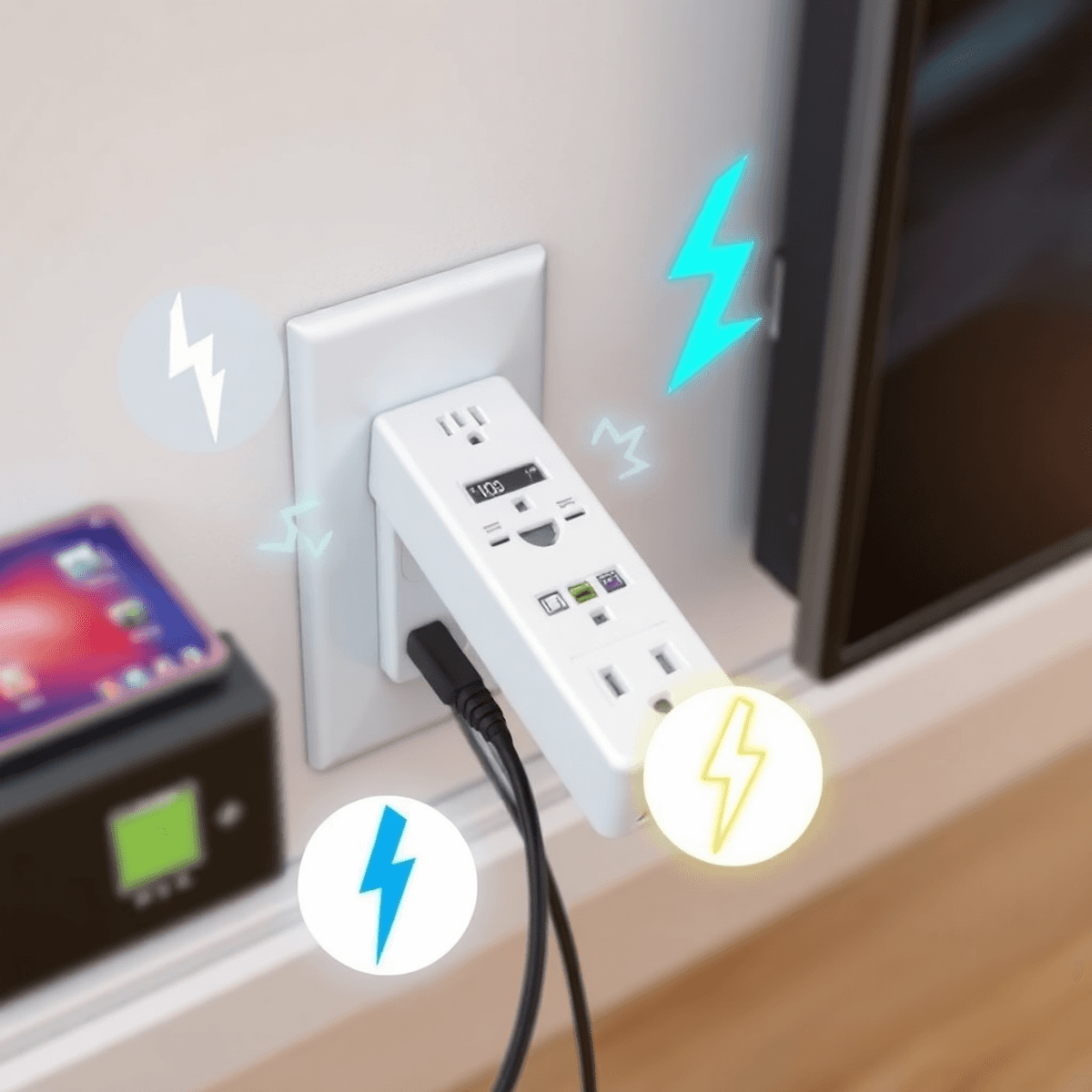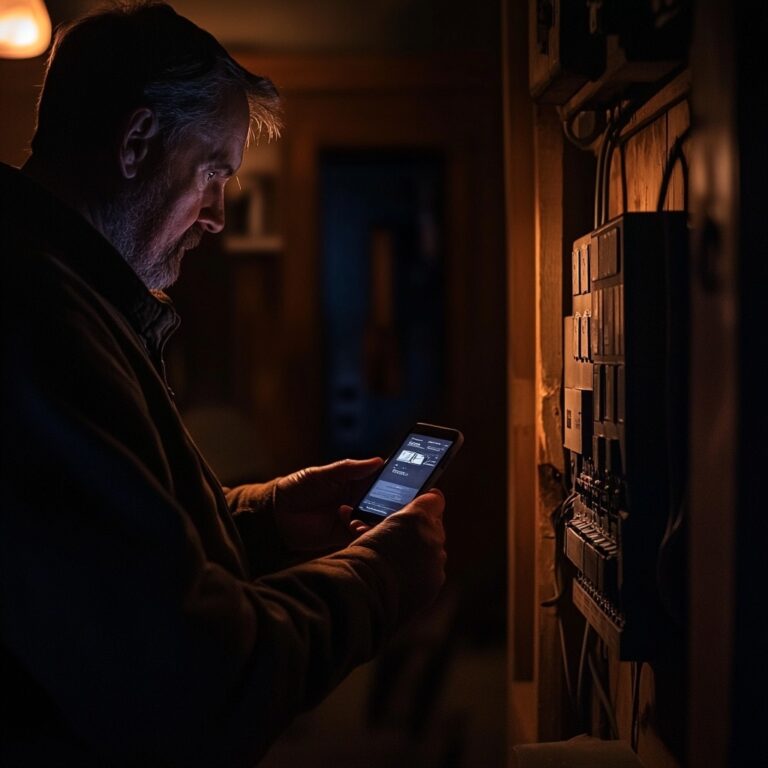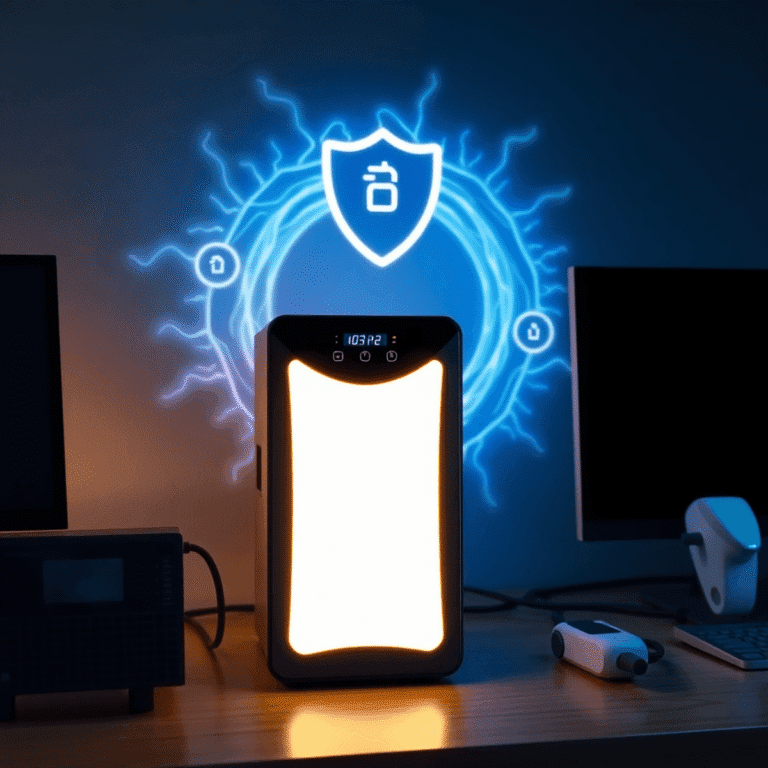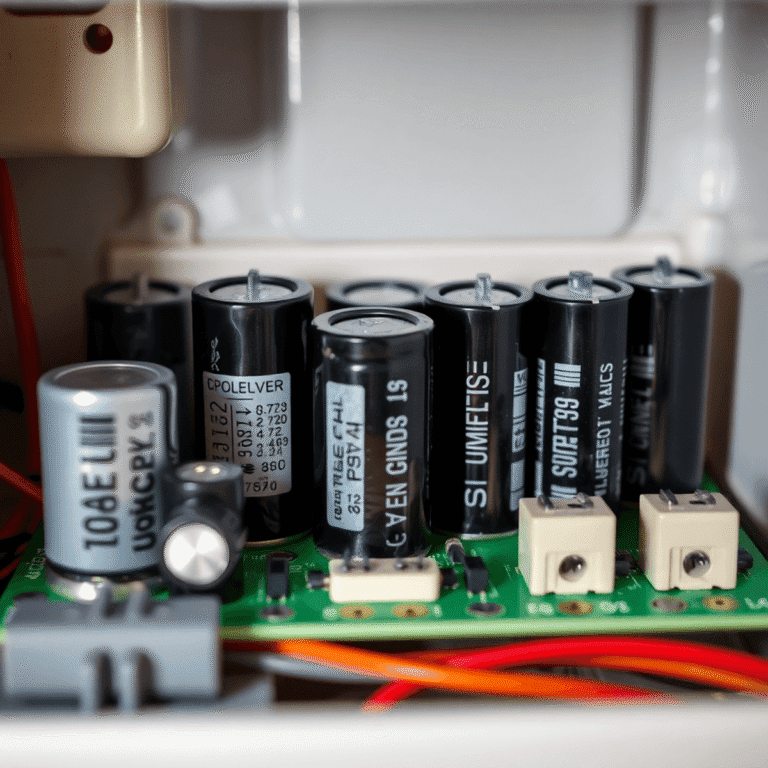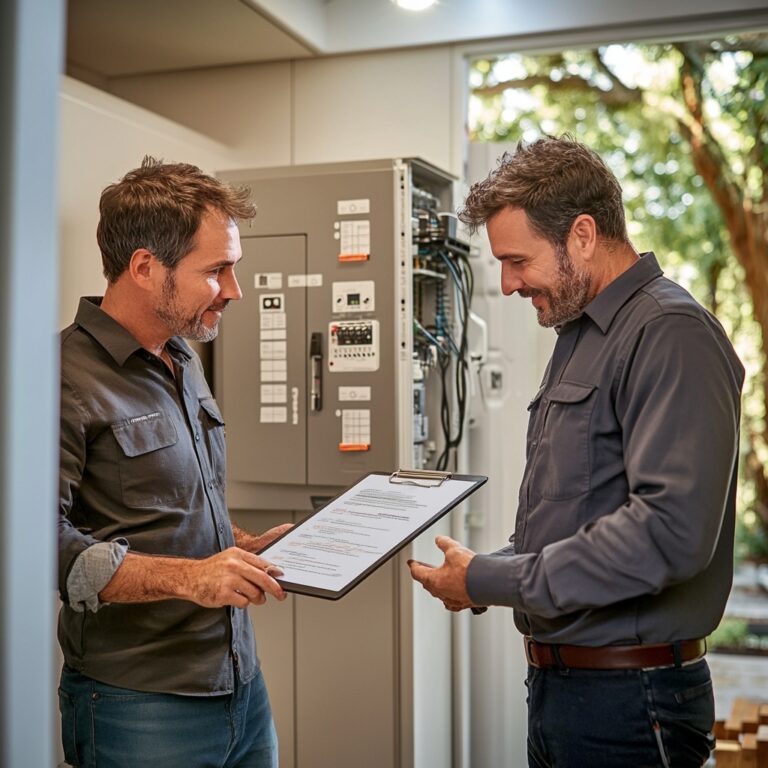The Science Behind Surge Protectors (And Why Cheap Ones Fail)
Surge protectors are essential devices designed to protect electronic equipment from unexpected power surges and voltage spikes. These surges can come from various sources such as lightning strikes, faulty wiring, or the operation of large appliances. Without surge protection, your valuable electronics could suffer irreparable damage.
Understanding how surge protectors work is important for consumers. It helps you make informed choices about the quality and capabilities of the products you’re buying. Not all surge protectors are the same—knowing why inexpensive surge protectors fail can save you from potential losses and frustrations.
In this article, you will learn how surge protectors work, the importance of their main parts, and why it’s crucial to invest in high-quality models. We’ll also discuss other benefits like EMI and RFI reduction and give practical tips for choosing the right surge protector for your needs.
If you need help selecting the right surge protector, feel free to reach out to us for expert advice.
Understanding Power Surges and Voltage Spikes
Power surges and voltage spikes are sudden, brief increases in electrical voltage that can damage sensitive electronics. A power surge typically refers to a rise in voltage above the standard level sustained for more than three nanoseconds, while a voltage spike is an even quicker burst, often lasting less than a nanosecond.
Understanding the causes of power surges helps you protect your devices:
- Lightning Strikes: When lightning hits nearby power lines or your home directly, it can send thousands of volts through your wiring in an instant.
- Appliance Cycling: Large appliances such as refrigerators, air conditioners, or pumps draw significant current when they turn on or off. This rapid switching can create small but damaging surges within your home’s circuits.
- Wiring Faults: Outdated or damaged wiring increases the risk of irregular voltage flow. Loose connections or exposed wires are frequent culprits.
- Utility Grid Switching: Power companies sometimes switch grids or restore service after outages, which can send unexpected surges to connected properties.
Even small surges add up over time, silently degrading electronics and reducing their lifespan. Recognizing these risks is the first step toward selecting protection that actually works.
The Role of Metal Oxide Varistors in Surge Protection
A metal oxide varistor (MOV) is a crucial component in most surge protectors, responsible for safeguarding your electronics from sudden voltage spikes. MOVs are designed to divert excess voltage away from connected devices, effectively protecting them from potential damage.
Key specifications to understand about MOVs include:
-
Clamping Voltage: This is the threshold at which the MOV activates to protect your equipment. When the incoming voltage exceeds this level, the MOV starts conducting electricity to ground, clamping the voltage to a safer level.
-
Joule Rating: Representing the energy absorption capacity of the MOV, this rating indicates how much energy it can absorb during a surge before failing. Higher joule ratings mean better protection and longer lifespan for your surge protector.
-
Response Time: This refers to how quickly an MOV can react to a surge event. Faster response times result in quicker protection for your devices, reducing the risk of damage.
Understanding these specifications helps you choose a surge protector that provides reliable protection for your valuable electronics. When selecting a surge protector, prioritizing models with higher joule ratings and lower clamping voltages ensures optimal performance and longevity.
Why Cheap Surge Protectors Fail to Deliver Effective Protection
Choosing a surge protector based solely on price often leads to disappointing results. The science behind surge protectors—and why cheap ones fail—can be traced directly to the quality of components, specifications, and safety features.
Key reasons for cheap surge protector failure:
-
Low-Quality Components: Budget models typically use inferior metal oxide varistors (MOVs) and other electronic parts. These lower-grade components respond less consistently to voltage spikes and tend to degrade much faster under stress.
-
Low Joule Rating: The joule rating indicates how much excess energy a surge protector can absorb before it fails. Cheaper units often have a low joule rating, sometimes as little as 90–200 joules. This means even a moderate surge can overwhelm the device, leaving your electronics exposed after just one event.
-
Lack of Safety Features: High-quality surge protectors include built-in indicators—such as lights or alarms—to let you know if protection is active or compromised. Many also feature automatic shutoff circuits that disconnect power once the MOV is spent. In contrast, budget models usually lack these features, making silent failure common. You may think your devices are protected when, in reality, the unit has already lost its protective capacity.
When evaluating options, always check for certifications and visible safety features. These details make all the difference between true protection and a false sense of security—especially during unpredictable surges.
Additional Benefits Beyond Voltage Protection: EMI and RFI Mitigation
Electromagnetic interference (EMI) and radio frequency interference (RFI) are common sources of “line noise” that can travel through electrical wiring and disrupt the performance of sensitive electronics. This interference often comes from nearby wireless devices, heavy-duty appliances, or industrial equipment. The result is audio-visual distortion on TVs, unexplained errors on computers, or degraded performance in networking hardware.
Surge protectors equipped with built-in noise filtering components—typically capacitors and inductors—act as barriers to these unwanted signals. By filtering out EMI and RFI before they reach your devices, these surge protectors not only defend against voltage spikes but also ensure cleaner power delivery.
Benefits of this filtration include:
- Reduced static or hum in audio equipment
- Fewer glitches on computer displays and network gear
- Increased lifespan for electronics sensitive to power quality
Not all surge protectors offer this level of protection; models with dedicated EMI/RFI filtering usually specify attenuation ratings or decibel (dB) reduction figures on their packaging.
Choosing the Right Type of Surge Protector for Your Needs
When selecting a surge protector, understanding the different types available is crucial. Two common forms include:
1. Direct Plug-In Surge Protectors
- These are compact devices that plug directly into wall outlets.
- Ideal for single appliances or electronics such as TVs and refrigerators.
- Convenient and space-saving, often featuring one or two outlets.
2. Power Strips with Built-In Surge Protection
- These offer multiple outlets, making them suitable for home offices or entertainment centers.
- Often equipped with additional features like USB ports for charging devices.
- Provide a higher joule rating, offering better protection for multiple gadgets.
Both options serve distinct needs and environments. Choosing the right type depends on your specific requirements and the number of devices you need to protect.
Best Practices for Using Surge Protectors Effectively
Proper grounding is non-negotiable when installing surge protectors. Always plug your surge protector directly into a wall outlet that has been professionally grounded. This ensures the excess voltage from a surge can safely travel to earth, instead of finding its way into your electronics or, worse, through you. A grounded outlet is essential for the science behind surge protectors (and why cheap ones fail), as even the best surge protector cannot divert surges without a proper ground path.
Avoid extension cords at all costs. Extension cords introduce extra resistance and increase the risk of overheating or fire during a power event. They can also disrupt effective grounding, compromising the performance of your surge protector. Plugging a surge protector into an ungrounded socket renders its protective features useless—there’s nowhere for the dangerous current to go except back into your devices.
Key practices:
- Plug only into grounded outlets
- Never daisy-chain multiple surge protectors or use with extension cords
- Regularly inspect your outlets for signs of wear or improper wiring
These habits keep protection at optimal levels and support the reliability of quality surge protection solutions.
Real-World Example: Quality vs Cheap Surge Protector Performance
Imagine a scenario where a power surge occurs due to a lightning strike. Two different devices, one protected by a high-quality surge protector and another by a cheap unit, are put to the test.
High-Quality Surge Protector:
- Equipped with robust metal oxide varistors (MOVs) that quickly clamp down excessive voltage.
- High joule rating allows it to absorb significant energy spikes.
- Built-in indicators alert users to any failure or degradation in protection.
- Automatic shutoff features prevent damage by disconnecting power when protection is compromised.
- An example of a reliable high-quality surge protector would be the Eaton Isobar, known for its durability and performance.
Cheap Surge Protector:
- Utilizes lower-quality MOVs that may not respond as swiftly or effectively.
- Lower joule rating means it absorbs less energy, leading to quicker failure.
- Lacks indicators, leaving users unaware of its operational status.
- No automatic shutoff, risking continued exposure to harmful surges.
The high-quality surge protector benefits your devices by providing reliable protection and peace of mind. In contrast, the cheap unit risks silent failure and potential damage to your electronics.
Conclusion
When it comes to protecting your electronics, choosing a reliable surge protector is essential. It’s not something you can skip. Devices with high joule ratings and built-in safety features significantly lower the chances of silent failure, helping you avoid costly equipment damage and data loss. Keep an eye out for clear indicator lights, automatic shutoff capabilities, and strong certifications.
Cheap models often cut corners on these crucial components, leaving your devices exposed when it matters most.
For residents and businesses in Melbourne, Protek Electrical is a trusted name in surge protection solutions. Their certified experts have over 15 years of hands-on experience in installation, repairs, upgrades, and maintenance. If you’re unsure which product suits your needs or require professional installation for guaranteed long-lasting performance, don’t hesitate to contact their knowledgeable team.
Investing in quality isn’t just about protecting your electronics—it’s about finding peace of mind.
FAQs (Frequently Asked Questions)
What is a surge protector and why is it important for electronic devices?
A surge protector is a device designed to shield electronic equipment from power surges and voltage spikes, which can cause significant damage. It helps ensure the longevity and safety of your electronics by diverting excess voltage away from connected devices.
What causes power surges and voltage spikes?
Power surges and voltage spikes can be caused by various factors including lightning strikes, the cycling on and off of large appliances, and wiring faults within a building’s electrical system. Understanding these causes helps in selecting appropriate surge protection.
How does a metal oxide varistor (MOV) work in surge protectors?
The metal oxide varistor (MOV) is the key component in most surge protectors. It acts as a voltage clamp that activates when voltage exceeds a certain threshold, absorbing excess energy (measured by its joule rating) quickly to protect connected devices from damage.
Why do cheap surge protectors often fail to provide effective protection?
Cheap surge protectors typically use lower-quality components with low joule ratings, meaning they absorb less energy and fail faster during surges. They often lack safety features like built-in indicators or automatic shutoff, leading to silent failure without user awareness.
Can surge protectors also reduce electromagnetic interference (EMI) and radio frequency interference (RFI)?
Yes, beyond protecting against voltage spikes, quality surge protectors help mitigate line noise caused by electromagnetic interference (EMI) and radio frequency interference (RFI), which can disrupt the performance of sensitive electronic devices.
What are best practices for using surge protectors effectively?
To use surge protectors effectively, always plug them into properly grounded outlets, avoid using extension cords or ungrounded sockets, and choose devices with adequate joule ratings and safety certifications. Investing in high-quality products ensures reliable protection.

